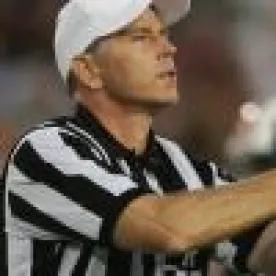The Sixth Circuit recently explored the question, what makes a cheerleading uniform a cheerleading uniform? Can it serve its function without stripes, chevrons, zigzags, and colorblocks? In the district court, Varsity Brands, Inc. sued Star Athletica, LLC, claiming that Star copied Varsity’s copyrighted designs for cheerleading uniforms. Star countered that Varsity did not hold valid copyrights to the designs. The district court agreed, granting summary judgment for Star. In Varsity Brands et al v. Star Athletica, in a divided decision, the Sixth Circuit reversed. Judge Moore, writing for the majority, concluded that Varsity’s designs are protectable under the Copyright Act. Along the way, the court addressed several unsettled issues of copyright law in the Sixth Circuit.
First, the court resolved what level of deference is owed to the Copyright Office (which initially approved Varsity’s copyright registrations). That determination, the court concluded, is entitled to Skidmore deference, not the higher Chevron deference. In light of the Copyright Office’s experience, published manual, and consistent treatment of Varsity’s designs, the court applied a presumption in favor of copyright validity.
Next, the court examined whether the designs were protectable. A cheerleading uniform, the court concluded, is a “useful article,” meaning that it serves an intrinsic utilitarian function. For the design of a useful article to be copyrightable, it must incorporate pictorial, graphic, or sculptural features that can be separated from and exist independently of the article’s function. After surveying the many tests that have been used to evaluate this question, the Court elected to take a “hybrid approach,” which asks, among other things: Is the design objectively necessary to the article’s useful function? What was the process for designing the article? Can the design be separately imagined as an independent artistic work?
The key question over which the majority and dissent diverged is how to define the useful function of uniforms. The utilitarian function of the cheerleader uniform, the majority concluded, is “to cover the body, wick away moisture, and withstand the rigors of athletic movements.” Under this conception, the majority reasoned that the stripes and zigzags were decorative, not functional, and therefore protected. Judge McKeague, in dissent, defined the uniform’s function more narrowly. He concluded that the uniform and its accompanying designs served to identify a cheerleader as a cheerleader. He further concluded that these decorative elements are part of the function, not separately protected.
Judge Moore countered that neither a “decorative” function nor an “identifying” function is properly considered part of what makes an article a “useful” article. Were it otherwise, the court reasoned, there would be no protection for purely decorative art; and the function of conveying information – as in, conveying the fact that the wearer is a cheerleader for a particular team – cannot on its own render the uniform a “useful article.”
This may not be the last word on the subject, however. Judge McKeague closed with a call to Congress or the Supreme Court to clarify the tangled law in this area.




 />i
/>i
